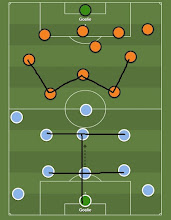Copa America has some unusual records in tournament history that may
not exist in other international competitions.
Copa America has been known for being a distinguished international
tournament. It is one of the oldest in the world, with its irregularities and
changes in format, editions, and participants.
Copa America 2024 is held in the USA, which is the second time it has been
staged in the CONCACAF region. It is one of the most unusual editions in Copa
America history, as the USA is not a member of CONMEBOL. They have not even
always taken part in the competition. Their last participation was, in fact, in
the Copa America Centenario 2016, where they served as hosts for the first
time.
The tournament is set to take place from June 20 to July 14, which is almost
at the same time as EURO 2024. One of the favourites, Brazil, has announced
their official final squad. Their new boss, Dorival Junior, surprisingly excluded a number of senior names, such as Neymar, Casemiro, and Arsenal’s Gabi Jesus. The former Flamengo boss is more in favour of younger names who have
been in form this season. The likes of two Girona men, Yan Couto and Savinho, do
make the cut, as well as PSG’s centre back, Beraldo, and FC Porto’s Evanilson.
Selecao is aiming to reach their third final in a row following their success in 2019 and 2021, albeit with different results. Brazil is the only team with such an unusual record, having appeared at the summit in three consecutive editions. They did it in 1995, 1997, and 1999, with two of them resulting in victories. Here are some other notable but unusual records in Copa America history.
The only non-South American winning Manager
Winning Copa America is not an absolute privilege for the South American
manager. One European coach once did it. An Englishman named Jack Greenwell was
able to lead Peru to win their first title in 1939. He remains the only
foreign-winning manager to date.
The 1939 South American Championship (the old name of Copa America) was one
of the editions in which the regional powerhouses Argentina and Brazil
withdrew, as well as Colombia and Bolivia. Consequently, there are only five
nations left in the competition. At that time, the tournament still used a
round-robin format, and Peru managed to finish on top with four wins out of
four games over the favourite, Uruguay.
Back then, Greenwell was in charge of Peru and the Universitario de Deportes
at the same time, from 1939 to 1940. The former Barcelona head coach managed to
clinch a league title in the same year. Prior to moving to South America, the
Durham-born player-manager in his first three years in the Catalan giant
management had won three Copa del Rey, two for Blaugrana in 1920 and 1922 and
one for Espanyol in 1929. He then moved to Colombia in 1940, with Independiente
Santa Fe as his last club before he departed due to a heart attack.
The only Goalkeeper named the Best Player
When a goalkeeper is named the best player in the tournament (not the best
goalkeeper), just like Oliver Kahn in the 2002 FIFA World Cup, his contribution
is bound to be extraordinary since he almost single-handedly carried the team
on his shoulder to glory.
Copa America has such a figure as Sergio Goycochea, who remains the only
goalkeeper named MVP to date. The Argentina hero in the 1990 FIFA World Cup did
a remarkable job despite only keeping a clean sheet twice in the 1993 edition.
He once again became the protagonist on penalties against Brazil and Colombia
in the knockout stage. The former Millonarios man helped Albiceleste defend the
title by crushing Mexico 2-1 at the summit. Sadly, he became the second goalie
in the pecking order again in the 1994 FIFA World Cup due to his poor form in
the qualifiers.
The only Edition without the Best Player
There was also one edition in which no player was awarded the MVP, or the
award was cancelled, to be exact. In Chile 2015, Lionel Messi was actually the
one who won the Golden Ball award for contributing one goal and three assists.
However, the Argentina skipper was rejected after he failed to lead them to
secure the title since he was so disappointed with the result that he himself
did not feel deserved for the accolade. Such an event would never be seen in
another major international tournament. Gerardo Martino’s men surprisingly lost
to the host on penalties after a stalemate during normal time.
The only non-South American MVP
Last but not least, there was one non-South American player who was awarded
the tournament MVP. Honduras’s Amado Guevara became the only one to date after
helping his country finish third in the 2001 edition. He bagged three goals and
helped Honduras pick up a win over Uruguay twice, at the group stage and the
third-place playoff, and sent Brazil to the exit at the quarterfinal with a 2-0
win
Copa America 2001 was the last time Argentina withdrew due to security
reasons and one of the few editions when Brazil only fielded the B team.
Honduras was Albiceleste’s replacement at the last minute since the AFA, the
Argentina football governing body, made such a controversial decision only a
day before the kickoff.
Guevara only had a brief spell in Europe with Spain’s Real Valladolid in the 1995–96 season. The former Costa Rica’s Deportivo Saprissa mainly played in the
MLS with three teams in six years: the New York Metrostars, Chivas USA, and
Toronto FC. Previously, he signed for Mexican sides Toros Neza and Zacatepec
before switching sides to Costa Rica with Saprissa.



Comments
Post a Comment